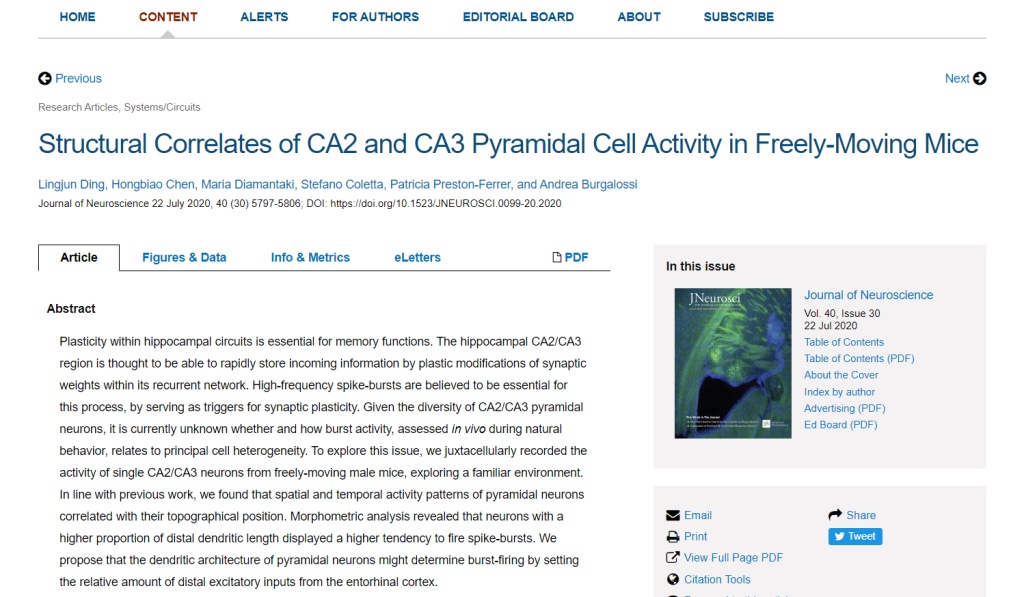- Author: Lingjun Ding,1,2,3 Hongbiao Chen,1,2,3 Maria Diamantaki,2,3 Stefano Coletta,2,3 Patricia Preston-Ferrer,1,2 Andrea Burgalossi,1,2
- Date: July 22, 2020
- Institute of Neurobiology, University of Tübingen, Tübingen 72076, Germany,
- Werner-Reichardt Centre for Integrative Neuroscience, Tübingen 72076, Germany,
- Graduate Training Centre of Neuroscience, IMPRS, Tübingen 72074, Germany
Download
 screenshot from Jneurosci webpage
screenshot from Jneurosci webpage
Abstract
Plasticity within hippocampal circuits is essential for memory functions. The hippocampal CA2/CA3 region is thought to be able to rapidly store incoming information by plastic modifications of synaptic weights within its recurrent network. High-frequency spike-bursts are believed to be essential for this process, by serving as triggers for synaptic plasticity. Given the diversity of CA2/CA3 pyramidal neurons, it is currently unknown whether and how burst activity, assessed in vivo during natural behavior, relates to principal cell heterogeneity. To explore this issue, we juxtacellularly recorded the activity of single CA2/CA3 neurons from freely-moving male mice, exploring a familiar environment. In line with previous work, we found that spatial and temporal activity patterns of pyramidal neurons correlated with their topographical position. Morphometric analysis revealed that neurons with a higher proportion of distal dendritic length displayed a higher tendency to fire spike-bursts. We propose that the dendritic architecture of pyramidal neurons might determine burst-firing by setting the relative amount of distal excitatory inputs from the entorhinal cortex.
Acknowledgments
Loading wonderful memories in Burgalossi’s lab…